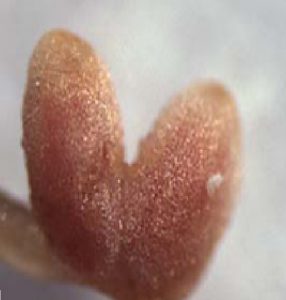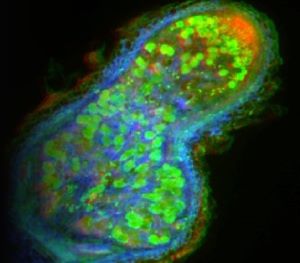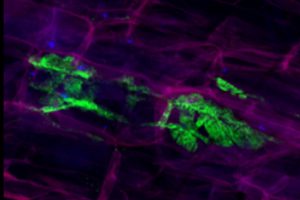Symbiosis and immunity
The chairs
- Claire Veneault-Fourrey is an INRAE research director at the UMR IAM in Nancy.
- Pierre Frendo is a Professor at the Université de Nice-Sophia Antipolis
- Pascal Ratet is a CNRS research director at IPS2-Université Paris Saclay.
Herbaceous and some perennial plants establish endosymbiosis with arbuscular mycorrhizal fungi (AMF) to gain a nutritional advantage. Due to the limited availability of nutrients in forest soils, tree roots in boreal and temperate forests establish mutualistic interactions with the hyphae of ectomycorrhizal fungi (ECM) to support their growth and health. Actinorrhizal and leguminous plants can also enter into endosymbiosis (nitrogen-fixing symbiosis, NFS) with frankia or rhizobia bacteria respectively to perform biological fixation of atmospheric nitrogen, also enabling improved nutrition. Establishing these beneficial interactions requires strict coordination of the development, immunity and physiology of microbial and plant cells. A clear role for the control of plant immunity (control of defense reactions) by microorganisms has been demonstrated in these symbiotic interactions, enabling the penetration, colonization and persistence of beneficial microorganisms within plant cells.

In parallel, the existence of priming of defense mechanisms against bioaggressors induced by symbiotic microorganisms has also been demonstrated. CMA or ECM symbiosis can protect plants against pathogens. This beneficial effect, known as “Mycorrhiza Induced Resistance” (MIR), has been demonstrated for root and aerial fungi, bacteria, oomycetes and viruses. The beneficial effects can be of various kinds: competition with pathogens, induction of systemic defenses or improved plant nutrition that enables it to better overcome pathogen attack. These effects are, however, controversial and seem to depend on the pathosystems analyzed. The relationship between this priming and the regulation of plant immunity by mycorrhizal effectors is also still poorly understood. The priming of defense mechanisms resulting from interaction with rhizobia, known as ISR (Induced Systemic Resistance), shows similarities with IRM. Here again, the beneficial effect has not been observed in all interactions and therefore depends on the pathosystem studied. A protective effect of rhizobium inoculation has been described for different pathosystems (Fusarium/lentil, Fusarium/chickpea, Red Crown Rot/soybean, Phoma medicaginis/M. truncatula, Root Rot Disease/chickpea), but the molecular mechanisms involved in this protection are largely unknown.

In this context, how plants differentiate pathogenic microorganisms from symbionts remains poorly understood. Although a better tolerance of symbiotic plants to pathogens would be one of the advantages of introducing symbiotic plants into agriculture, there is a lack of generic knowledge on the protective effect of symbiotic interactions against pathogen attack. The aim of this working group is to gain a better understanding of the mechanisms by which symbiosis regulates plant immunity, in order to use symbiotic leverage to reduce the use of pesticides in agriculture.



